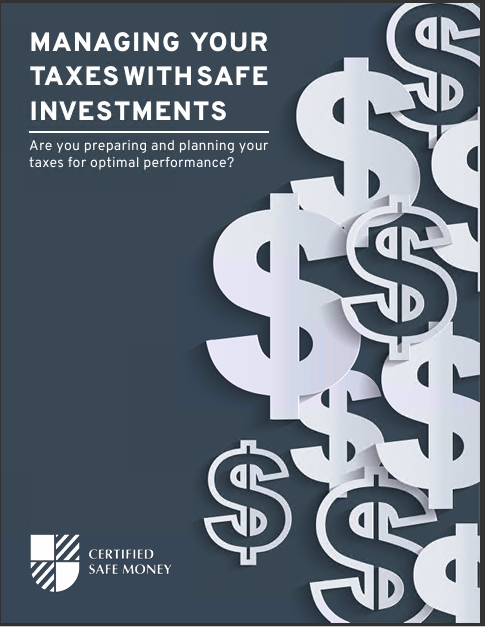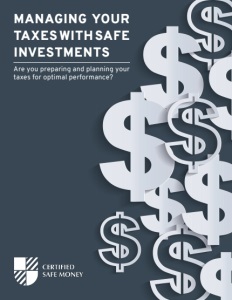Key Takeaways
-
Indexed Universal Life (IUL) insurance offers a balanced approach between market-based gains and protection against market downturns.
-
It’s essential to understand potential costs and limitations to avoid surprises later, making informed decisions critical.
The Attractive Side of Indexed Universal Life Insurance
When you’re exploring safe ways to invest your money, Indexed Universal Life Insurance (IUL) often pops up. But before you dive into this popular financial tool, it’s important to get a solid grasp of its benefits. Here are four big advantages that make IUL attractive to investors seeking both protection and growth.
1. Growth Potential With Limited Risk
One of the most appealing aspects of Indexed Universal Life insurance is its unique blend of investment opportunities and risk management. Unlike traditional life insurance, IUL allows your cash value to grow based on the performance of market indices like the S&P 500. You’re not directly invested in the market, so you won’t face direct losses if the market tanks. Instead, you earn interest based on a set participation rate or cap, ensuring you benefit from market upsides without the full downside risk.
This structure is especially appealing if you’re cautious about risking your hard-earned savings but still want the potential for higher returns than traditional fixed products. Generally, IUL returns vary each year but typically range between 5% to 10%, offering moderate but attractive growth prospects.
2. Tax Advantages That Sweeten the Deal
Another major draw for Indexed Universal Life policies is their significant tax benefits. Similar to other cash-value life insurance policies, the money you accumulate inside an IUL grows tax-deferred. This means you won’t owe taxes on your policy’s earnings year-to-year, letting your investment compound more efficiently.
Moreover, withdrawals and policy loans from your IUL are often tax-free, provided your policy remains in force. This feature is particularly useful during retirement, allowing you to supplement your income without worrying about additional taxes that could erode your savings. Just be careful to avoid lapsing your policy, as outstanding loans can trigger tax liabilities if your policy terminates.
3. Flexible Premium Payments
Flexibility is another key feature making Indexed Universal Life attractive. Unlike other insurance policies with fixed premiums, IUL allows you to adjust how much you pay into your policy each year, within certain limits. If you experience a financially challenging year, you can reduce or even temporarily skip payments as long as your cash value covers the cost of insurance and associated fees.
Conversely, if you have a good financial year, you can contribute more to build cash value faster. This flexibility is especially beneficial for freelancers, business owners, or anyone whose income varies significantly year-to-year. Keep in mind, however, that consistently underfunding your policy could reduce its benefits or even cause it to lapse prematurely.
4. Death Benefit Protection and Estate Planning
At its core, Indexed Universal Life is still life insurance, providing a tax-free death benefit to your beneficiaries upon your passing. This financial safety net ensures your loved ones receive a lump sum payment, usually exempt from federal income taxes, making it an essential part of many estate planning strategies.
The death benefit can also be adjusted over time to meet your changing financial needs, with options to increase or decrease the coverage based on your circumstances. Additionally, the payout can help cover final expenses, outstanding debts, or even estate taxes, offering peace of mind that your family won’t face significant financial stress during an already difficult time.
Understanding the Drawbacks Before You Commit
While the benefits of Indexed Universal Life insurance sound appealing, it’s just as crucial to understand the potential drawbacks. Here are four big disadvantages that could impact your decision to invest in an IUL policy.
1. Complex Structure and Fees
Indexed Universal Life insurance isn’t simple. Its structure includes many moving parts, such as caps, floors, participation rates, and fees, all of which can significantly influence your policy’s performance. Understanding exactly how your cash value grows can be confusing, particularly if you’re new to insurance-based investment products.
Moreover, IUL policies often come with high upfront costs and ongoing charges like administrative fees, insurance costs, and surrender charges if you decide to terminate your policy within the initial years—typically within 10 to 15 years. These fees can considerably reduce your net returns, especially if you exit early.
2. Earnings Limitations Due to Caps and Participation Rates
While the structure of an IUL protects you against market downturns, it also limits your earning potential. Most policies come with “caps” or upper limits on how much interest you can earn in a year, regardless of how strongly the underlying index performs.
For example, if your policy has an 8% cap and the linked index surges 15% in a given year, you’ll only benefit from the first 8%. Likewise, the participation rate may only allow you to earn a fraction of the index’s gains. While this reduces risk, it can also significantly limit your upside compared to direct market investments.
3. Market Performance Uncertainty
Though Indexed Universal Life offers protection against market losses, your returns can still fluctuate dramatically based on index performance. If the market experiences flat or weak years, your cash value growth could stagnate, leading to disappointing returns over extended periods.
This uncertainty can become problematic if your financial goals rely on steady, predictable growth. Prolonged periods of minimal market gains could hinder your retirement planning or financial targets, forcing you to reconsider your expectations or adjust your overall financial strategy.
4. Risk of Policy Lapse
Perhaps the most significant potential pitfall of Indexed Universal Life insurance is the risk of your policy lapsing. If you don’t consistently maintain sufficient premiums or if the policy’s cash value fails to cover ongoing charges, your policy could lapse, leaving you without coverage.
A lapse could trigger substantial tax consequences, especially if you’ve previously taken tax-free withdrawals or loans against your policy. All previously untaxed earnings could become taxable, potentially leaving you with a hefty tax bill at the worst possible moment. Therefore, diligent monitoring and consistent funding are crucial to avoid unintended policy lapses.
Making Your Decision With Clarity
Indexed Universal Life insurance clearly has attractive features like market-linked growth, tax advantages, flexible premiums, and robust death benefit protection. However, the complexity, potential limitations on growth, uncertainty of market performance, and risks associated with policy lapses require careful consideration.
Before making your choice, weigh these benefits against the potential downsides. Ideally, an Indexed Universal Life policy should align closely with your financial goals, risk tolerance, and investment timeline, which often ranges between 10 to 30 years or longer.
If you’re considering this route, take your time to thoroughly review policy illustrations, fees, caps, floors, and historical performance data. It’s also wise to compare it with other financial vehicles, like traditional universal life insurance, whole life insurance, or fixed indexed annuities, to ensure you’re picking the best option tailored to your needs.
Ultimately, being fully informed ensures that your decision to buy Indexed Universal Life insurance will support your financial security rather than undermine it.











